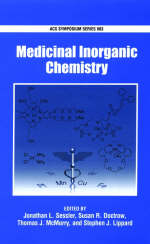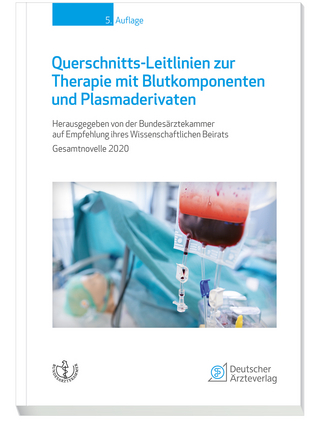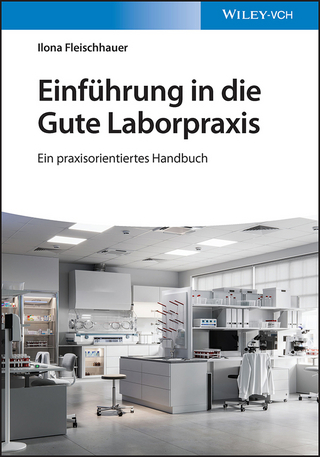
Medicinal Inorganic Chemistry
Oxford University Press Inc (Verlag)
978-0-8412-3899-2 (ISBN)
- Keine Verlagsinformationen verfügbar
- Artikel merken
This book, a compilation by experts in the field, is designed to provide an introduction to the area of medicinal inorganic chemistry and to summarize current, state-of-the-art developments in the field. Medicinal inorganic chemistry represents a key thrust area in medicine and biological inorganic chemistry. It is one of great current excitement and achievement. The field of metals in medicine represents an approximate $3 billion dollar a year industry, with
successes in the area of Tc- and Gd-based imaging agents and Pt-based cancer therapeutics being major contributors to this bottom line. It has become increasingly apparent, however, that metal-based pharmaceuticals can play a prominent role in areas outside of imaging and oncology, including in those
associated with the diagnosis and treatment of metabolism- and genetic disorders, cardiovascular disease, gene therapy, inflammation, reperfusion injury, stroke, diabetes, ALS, malaria, and neurological disease to name but a few. A objective of this book, therefore, is to highlight these opportunities for future advances and to foster further interactions between those working in the metal-based drug development, including imaging agents, and those engaged in the more classic pharmaceutical
industries.
Professor Jonathan L. Sessler obtained a Ph.D. Stanford University in 1982 under the aegis of Prof. J. P. Collman). After postdoctoral work with Profs. Jean-Marie Lehn and Iwao Tabushi, he accepted a faculty position at the University of Texas at Austin, where is currently the Roland K. Pettit Professor of Chemistry. Dr. Sessler is a co-founder (with Dr. Richard A. Miller) of Pharmacyclics, Inc., a publicly traded company dedicated to developing biomedical applications of expanded porphyrins. Thomas McMurry has been part of the scientific management team at EPIX Pharmaceuticals since it initiated operations in 1993 and is currently Vice President, Research. Prior to joining EPIX, he was a Senior Staff Fellow in Radiation Oncology at the National Cancer Institute in Bethesda, Maryland, and a postdoctoral associate at the University of California, Berkeley. Stephen J. Lippard is the Arthur Amos Noyes Professor and Head of the Chemistry Department at the Massachusetts Institute of Technology. A member of the National Academy of Sciences and its Institute of Medicine, his laboratory works at the interface of inorganic chemistry and biology. Included are studies of platinum anticancer drugs, non-heme diiron centers, and probes to investigate neurochemical signaling by zinc and nitric oxide. He is co-author with Jeremy M. Berg of the book "Principles of Bioinorganic Chemistry. Susan R. Doctrow, Ph.D., as Vice President, Research at Eukarion, Inc., has been developing synthetic SOD/catalase mimetics as potential treatments for a broad range of diseases including neurodegenerative disorders. Previously, she was employed at Alkermes, Inc. and as Instructor in Biochemistry (Department of Surgery) at Harvard Medical School. Dr. Doctrow has a Ph.D. in Biochemistry from Brandeis University and conducted postdoctoral research at Children's Hospital, Boston.
1.: Stephen J. Lippard: Metal Ion Chemistry for Sustaining Life
2.: John W. Kozarich: Medicinal Inorganic Chemistry: Promises and Challenges
3.: Peter C. Preusch: Metals in Medicine: Biomedical Significance and Inorganic Chemistry
4.: Christen M. Giandomenico and Ernest Wong: Discovery and Development of Third-Generation Platinum Antitumor Agents with Oral Activity
5.: John F. Schenck: Brain Iron as an Endrogenous Contrast Agent in High Field MRI
6.: Nicholas Farrell: Platinum Anticancer Drugs: From Laboratory to Clinic
7.: Jan Reedik: Mechanistic Studies of Pt and Ru Compounds with Antitumor Properties
8.: Darren J. Magda, Nikolay Gerasimchuk, Zhong Wang, Jonathan L. Sessler, and Richard A. Miller: Mechanistic Studies of Motexafin Gadolinium (Xcyrin): A Redox Active Agent That Reacts with Electron-Rich Biological Substrates
9.: Pier Lucio Anelli, Marino Brocchetta, Vito Lorusso, Giuseppe Manfredi, Alberto Morisetti, Pierfrancesco Morosini, Marcella Murru, Daniela Palano, and Massimo Visigalli: Bile Acids at Work: Development of a New Intravascular MRI Contrast Agent
10.: A. Dean Sherry, Shanrong Zhang, and Mark Woods: Water Exchange is the Key Parameter in the Design of Next-Generation MRI Agents
11.: Peter Caravan: Targeted Molecular Imaging with MRI
12.: Johannes Platzek and Heribert Schmitt-Willich: Synthesis and Development of Gadomer: A Dendritic MRI Contrast Agent
13.: Jack T. Rogers: Amyloid Precursor Protein and Ferritin Translation: Implications for Metals and Alzheimer's Disease Therapeutics
14.: George J. Brewer: Anticopper Therapy with Tetrathiomolybdate for Wilson's Disease, Cancer, and Diseases of Inflammation and Fibrosis
15.: Clare Kenny Carney, Lisa Pasierb, and David Wright: Heme Detoxification in Malaria: A Target Rich Environment
16.: Anne Robert, Francoise Benoit-Vical, and Bernard Meunier: Heme as a Trigger and Target of the Antimalarial Peroxide Artemisinin
17.: John P. Crow: Administration of Mn Polyyrin and Mn Texaphyrin at Symptom Onset Extends Survival of ALS Mice
18.: Susan R. Doctorow, Michael Baudry, Karl Huffman, Bernard Malfroy, and Simon Melov: Salen Manganese Complexes: Multifunctional Catalytic Antioxidants Protective in Models for Neurodegenerative Diseases of Aging
19.: P. John Hart and Joan Selverstone Valentine: Metal Deficient Copper-Zinc Superixide Dismutase and Familial Amyotrophic Lateral Sclerosis: Pathogenic SOD1 Oligomerization through Non-Native Protein-Protein Interactions
20.: Raymond J. Bergeron, Jan Wiegand, James S. McManis, William R. Weimar, Jeong-Hyun Park, Eileen Eiler-McManis, Jennifer Bergeron, and Gary M. Brittenham: Impact of the Lipophilicity of Desferrithiocin Anaglogues on Iron Clearance
21.: Katherine H. Thompson, Barry D. Liboiron, Graeme R. Hanson, and Chris Orvig: In Vivo Coordination Chemistry and Biocalization of Bis(ligand)oxovanadium(IV) Complexes for Diabetes Treatment
22.: Patrick J. Farmer, Daniel Brayton, Christina Moore, Donny Williams, Babbak Shahandeh, Dazhi Cen, and Frank Meyskens, Jr.: Targeting Melanoma via Metal-Based Stress
23.: Wiley J. Youngs, Claire A. Tesslier, Jared C. Garrison, Carol A. Quezada, Abdulkareem Melaiye, Semih Durmus, Matthew J. Panzer, and Aysegul Kascatan-Nebioglu: Medicinal Applications of Metal Complexes of N-Heterocyclic Carbenes
| Erscheint lt. Verlag | 1.8.2005 |
|---|---|
| Reihe/Serie | ACS Symposium Series ; No. 903 |
| Zusatzinfo | 24 halftones, 143 line illus. |
| Verlagsort | New York |
| Sprache | englisch |
| Maße | 158 x 237 mm |
| Gewicht | 708 g |
| Themenwelt | Medizin / Pharmazie ► Medizinische Fachgebiete ► Laboratoriumsmedizin |
| Medizin / Pharmazie ► Medizinische Fachgebiete ► Pharmakologie / Pharmakotherapie | |
| Naturwissenschaften ► Biologie ► Biochemie | |
| Naturwissenschaften ► Chemie ► Anorganische Chemie | |
| ISBN-10 | 0-8412-3899-5 / 0841238995 |
| ISBN-13 | 978-0-8412-3899-2 / 9780841238992 |
| Zustand | Neuware |
| Haben Sie eine Frage zum Produkt? |
aus dem Bereich


